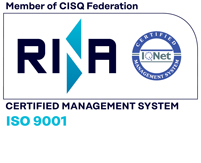Giordania
NATIONAL EXPORTS TO ARAB MARKETS SURGE ON RISING DEMAND AND COMPETITIVENESS
The national exports to the Greater Arab Free Trade Area grew by 15.9% in 2024, reaching JD 3.564 billion, up from JD 3.076 billion in 2023, according to official data. The increase, valued at JD 488 million, reflects stronger demand for Jordanian products and their growing competitiveness in regional markets.Exports to the Arab trade bloc accounted for 42% of Jordan’s total national exports in 2024, up from 37% the previous year. Meanwhile, imports from Arab countries rose by 8.2% to JD 5.078 billion, compared to JD 4.693 billion in 2023.President of the Jordan and Amman Chambers of Industry, Fathi Al-Jaghbir, attributed the export growth to increased demand in Arab markets, particularly Iraq and Saudi Arabia, where Jordanian products are recognized for their quality and competitive advantages.According to Al-Jaghbir, exports to Iraq rose by 42.5% to JD 905 million, while exports to Saudi Arabia increased by 14.3% to JD 1.1 billion. He highlighted Jordan’s efforts to expand trade ties with neighboring countries, which have contributed to stronger market presence and higher sales of national products.He also emphasized the role of the Jordan Chamber of Industry in promoting Jordanian products across Arab markets, particularly in Saudi Arabia and Iraq. Collaborative efforts with public and private entities have supported this expansion, helping to enhance the visibility and reputation of national industries.Among the industries that saw the highest export growth in 2024 were engineering industries such as cables and wires, construction materials including prefabricated buildings, and food industries such as processed foods, tea, and tobacco. Other sectors experiencing increased demand included chemicals, packaging, plastics, wood products, and furniture.Jordan’s top exports to the Arab region included fertilizers and cleaning products, while key imports from Arab countries consisted of petroleum products, plastics, and jewelry.Al-Jaghbir noted that despite the current export levels, Jordanian industries still have significant untapped potential in Arab markets. According to the International Trade Center’s export potential map, Jordan has an estimated $2 billion in additional export opportunities, particularly in Saudi Arabia ($650 million), the UAE ($270 million), Kuwait ($136 million), Qatar ($135 million), and Egypt ($120 million).To sustain and further expand Jordan’s exports to Arab markets, Al-Jaghbir stressed the need for key policy measures, particularly the full implementation of the Greater Arab Free Trade Agreement to eliminate trade barriers and simplify export procedures, ensuring smoother market access.He also highlighted the importance of reducing production costs by addressing energy expenses, emphasizing the need to accelerate the supply of natural gas to industrial zones to enhance price competitiveness in both local and regional markets. Additionally, he underscored the necessity of maximizing export potential by developing strategies to capitalize on unexploited opportunities, especially in light of the rapidly evolving global trade landscape.Al-Jaghbir emphasized the importance of strengthening intra-Arab trade, which currently accounts for only 12% of the region’s total external trade. He called for greater cooperation among Arab nations to ease trade restrictions, facilitate labor mobility, encourage investment, and improve transportation infrastructure.He further highlighted the critical role of the private sector in advancing economic integration, urging Arab governments to remove constraints that hinder cross-border trade and investment. Strengthening regional partnerships, he said, is key to unlocking new growth opportunities for Jordanian industries and enhancing their competitiveness in Arab markets. (ICE AMMAN)
Fonte notizia: petra news




